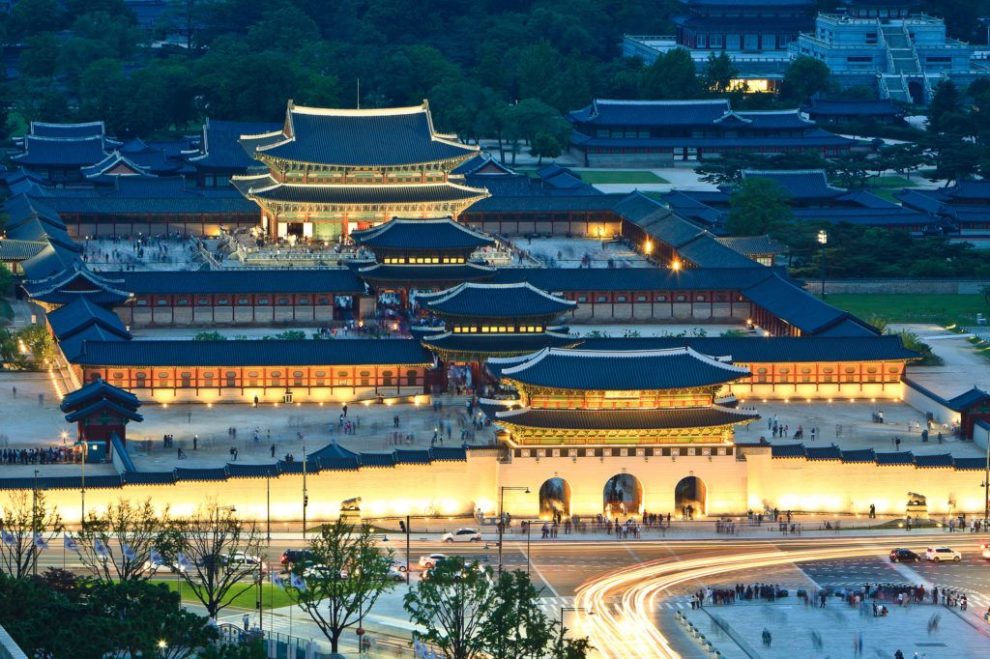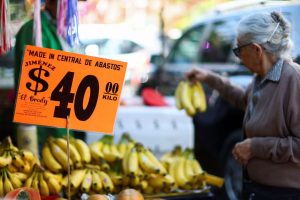South Korea’s four royal palaces, Jongmyo Shrine and royal tombs of the Joseon Dynasty will be open to the public free of charge during the Chuseok (harvest festival) holiday.
This year, Chuseok falls on September 14-18, including the weekend before. During this period, Gyeongbokgung, Changgyeonggung, Changdeokgung (except the rear garden), and Deoksugung palaces are free to visit. Jongmyo Shrine, which usually requires advance reservations, is also open to the public without a reservation. However, all of these venues will be closed on September 19, right after the holiday.
At Gyeongbokgung Palace, visitors can enjoy the Changing of the Guard ceremony (twice a day, at 10:00 am and 2:00 pm), which recreates the shifts of the guards and soldiers in charge of protecting the palace gates. In addition, at 3:00 pm, a watch reenactment will be held, in which guards and soldiers patrol both the palace and the city.
Among the most notable interactive activities is the “Saenggwabang” program at Gyeongbokgung Palace, where visitors will be able to taste medicinal teas and royal sweets. Meanwhile, at Changgyeonggung Palace, “Yayeon,” a nighttime cultural program based on filial piety, will be organized. This event will recreate the acts that the crown prince performed in honor of his father, the king. It is important to mention that these activities do have an additional cost and require advance reservation, so it is recommended to check the information in advance.
A brief explanation of each of these historical sites in Korea
1. Gyeongbokgung Palace (경복궁)
Gyeongbokgung Palace is located in Seoul. This is the largest and most iconic of the Five Grand Palaces of the Joseon Dynasty (1392–1897). It was built in 1395 as the central seat of government and the main residence of the Joseon kings. Despite being attacked and destroyed on several occasions, most notably during the Japanese invasions of the late 16th century, it has been restored and remains an iconic symbol of Korean culture.
The palace’s design is themed around the balance between nature and architecture. It features a geometric arrangement of buildings, pavilions, gates and gardens, including the famous lotus ponds. Inside is the Geunjeongjeon Throne Hall, where the king held official ceremonies and important meetings. In addition, the Gyeonghoeru Pavilion, built on an artificial lake, is one of the most photographed places for its scenic beauty.
2. Changdeokgung Palace (창덕궁)
Changdeokgung Palace, also in Seoul, is known for its beautiful integration with the natural surroundings. It is often considered the most harmonious palace of the Joseon period. This is due to its beautiful and impressive design, which respects the natural topography of the land, rather than imposing a geometric structure.
This palace was the most used by the kings of the dynasty and is famous for its Secret Garden (Huwon), an area reserved for royalty in which you can find ponds, pavilions and vegetation in a serene and tranquil environment.
Changdeokgung was declared a UNESCO World Heritage Site in 1997 as an excellent example of Korean palace architecture, with a focus on harmony with the natural landscape.

3. Deoksugung Palace (덕수궁)
Deoksugung Palace is also located in Seoul. This site is known for its combination of traditional Korean architecture with Western influences. Originally a private residence, it was converted into a royal palace after the Japanese invasion in 1592. King Gojong, the last monarch of the Joseon Dynasty, lived in Deoksugung after his abdication in 1907.

What sets Deoksugung apart from other palaces is the coexistence of traditional wooden buildings and modern stone structures, such as Seokjojeon Hall. The latter is a neoclassical building built during Korea’s attempts to modernize. The palace is also famous for its changing of the guard ceremony, a reenactment of the changing of the guard that took place during the Joseon era.

4. Changgyeonggung Palace (창경궁)
Built in 1483, Changgyeonggung was originally erected as a secondary palace to house the queens and mothers of the kings of the Joseon Dynasty.
Over the centuries, it underwent several reconstructions, especially during the Japanese occupation, when it was converted into a zoo and botanical garden. After independence, the zoo was removed and the palace was restored to its original form.

One of the most interesting aspects of Changgyeonggung is its less formal and more intimate atmosphere compared to the other palaces.
Myeongjeongjeon Pavilion is the oldest building in the complex and was used for official meetings. The palace is also home to Okcheongyo Bridge, one of the oldest bridges in Korea.

Jongmyo Shrine (종묘)
Jongmyo Shrine, also located in Seoul, is one of the most sacred sites in Korea, dedicated to the worship of the royal ancestors of the Joseon Dynasty.
It is the oldest Confucian shrine in the world that has been preserved in its original form. Its construction was ordered by King Taejo, the founder of the dynasty, and it has been a place of worship for over 600 years.
Jongmyo is famous for its austere and understated architecture, which reflects the Confucian values of simplicity and respect. Jeongjeon Hall, the main building, houses tablets with the names of kings and queens, and is where ancestral ceremonies are held in their honour. The Jongmyo Jerye Ceremony, which includes traditional music and dance, has been declared an Intangible Cultural Heritage of Humanity by UNESCO.

Royal Tombs of the Joseon Dynasty (조선왕릉)
The Royal Tombs of the Joseon Dynasty are scattered throughout South Korea and are the resting place of 27 monarchs of the dynasty, as well as their consorts and princes. These tombs were declared a UNESCO World Heritage Site in 2009. They are particularly notable for their integration into the natural landscape, following Korean geomantic principles known as pungsu-jiri (feng shui).
The tombs are carefully oriented in the belief that the energy of nature influences the well-being of the deceased. The sites are surrounded by a series of sculptures of animals and guardian figures, and often include ceremonial areas with stone altars and pavilions. Donggureung in Guri and Seolleung in Seoul are two of the most visited tomb complexes.



![[Img #74675]](https://thelatestnews.world/wp-content/uploads/2024/12/They-discover-a-new-class-of-X-ray-sources-in-the-150x150.jpg)












Add Comment